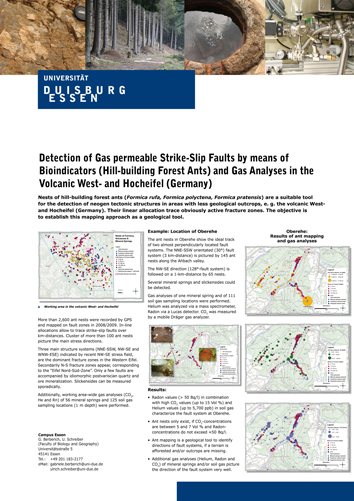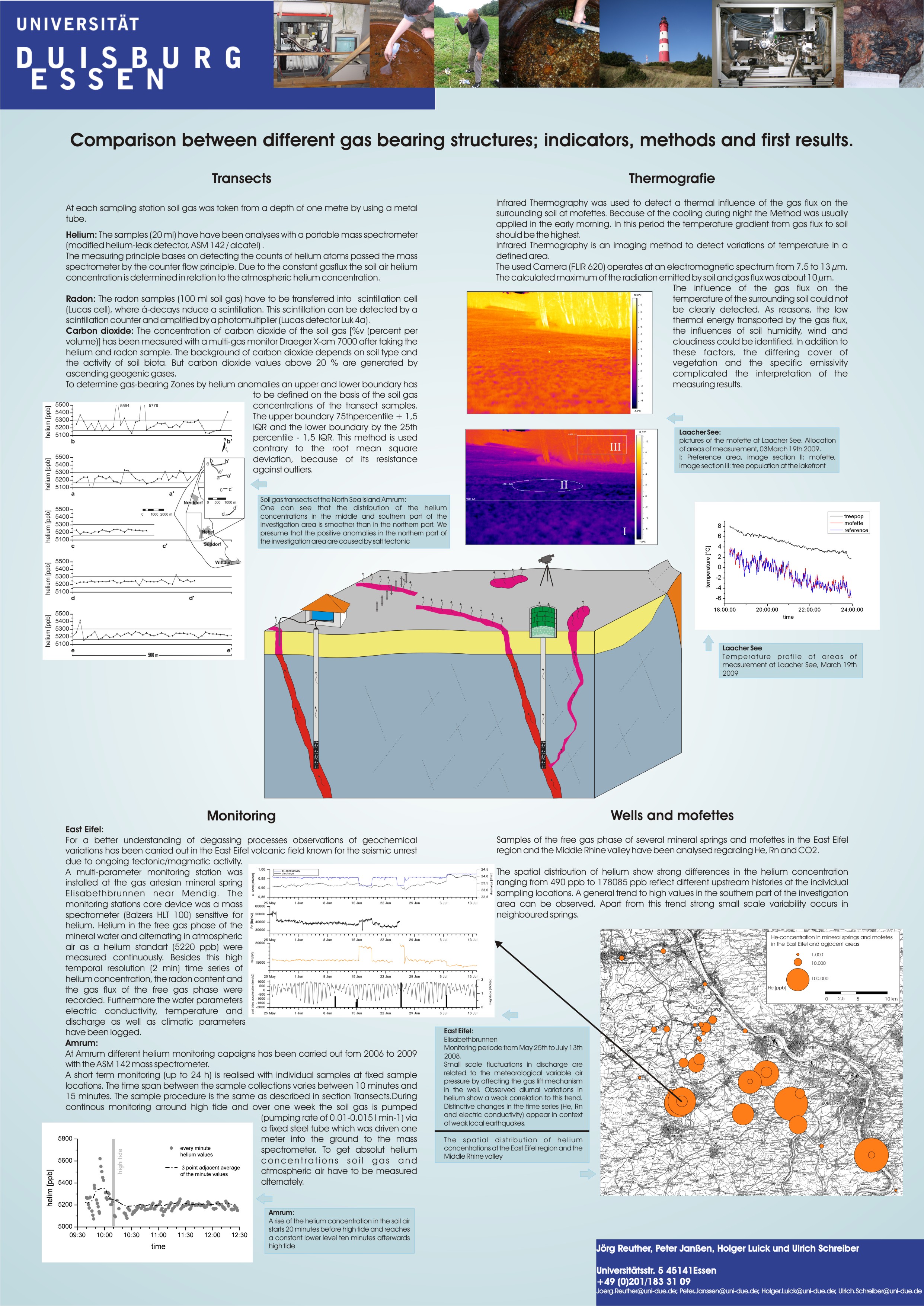Tectonics & Geogenic Gases
Rhenish Massif – Tectonics & Geogenic Gases
Young tectonics of the Rhenish Massif is characterized by recent uplift and seismically active faults. A major part of the faults was created during the Mesozoic and reactivated during the formation of the European Central Rift System (ECRIS). As a result, the V-shaped Lower Rhenish Basin developed, which subsidence was accompanied by a clockwise rotation of the Eastern part of the Rhenish Massif. This process demands wide range of strike-slip faults where the crustal movements can take place: sinistral strike-slip faults in the Eastern part and dextral strike-slip faults in the Western part of the Rhenish Massif.
In 2003 and 2004, first investigations of the Ahr valley and the Westerwald region showed that the postulated recent active shear system can be identified in these study areas. Furthermore, these fault zones seem to be widespread in the Rhenish Massif. These strike-slip faults are characterized by ascending geogenic gases and locally concentrated quartz and ore formations.
The objective of this project, subdivided into different parts, is to analyze the recent fault system to get knowledge of the recent tectonic activity in this region.
Part 1 (2004–2007): Recent tectonics in the Waldesch study area
Within the framework of a PhD-Thesis (Simon, 2007), the postulated fault system of the Rhenish Massif is investigated in the Waldesch study area (100 km²) south of Koblenz, geologically attributed to the Devonian Mosel-Mulde (striking NE-SW). For most of the faults are covered by young sediments, it is only conditionally possible to detect the faults by mapping. Ascending geogenic gases can be used to identify gas-permeable faults. Therefore, Helium as an outstanding fault zone tracer gas was analysed in soil gas in 1 m depth, using a mass spectrometer. If He concentrations considerably exceed the atmospheric concentration of 5220 ppbv; Holland & Emerson, 1987) a fault-controlled gas flow from deep crustal parts can be assumed.
Mapping identified a WNW-ESE main fault system (strike: about 110°) which is accompanied by conjugated NE-SW and a few NNW-SSE faults. The schematic map shows the dominating WNW-ESE and NE-SW fault zones.
During fieldwork, a noticeable linear arrangement of nests of red wood ants was observed. This linear distribution is obviously linked to active fault zones.



